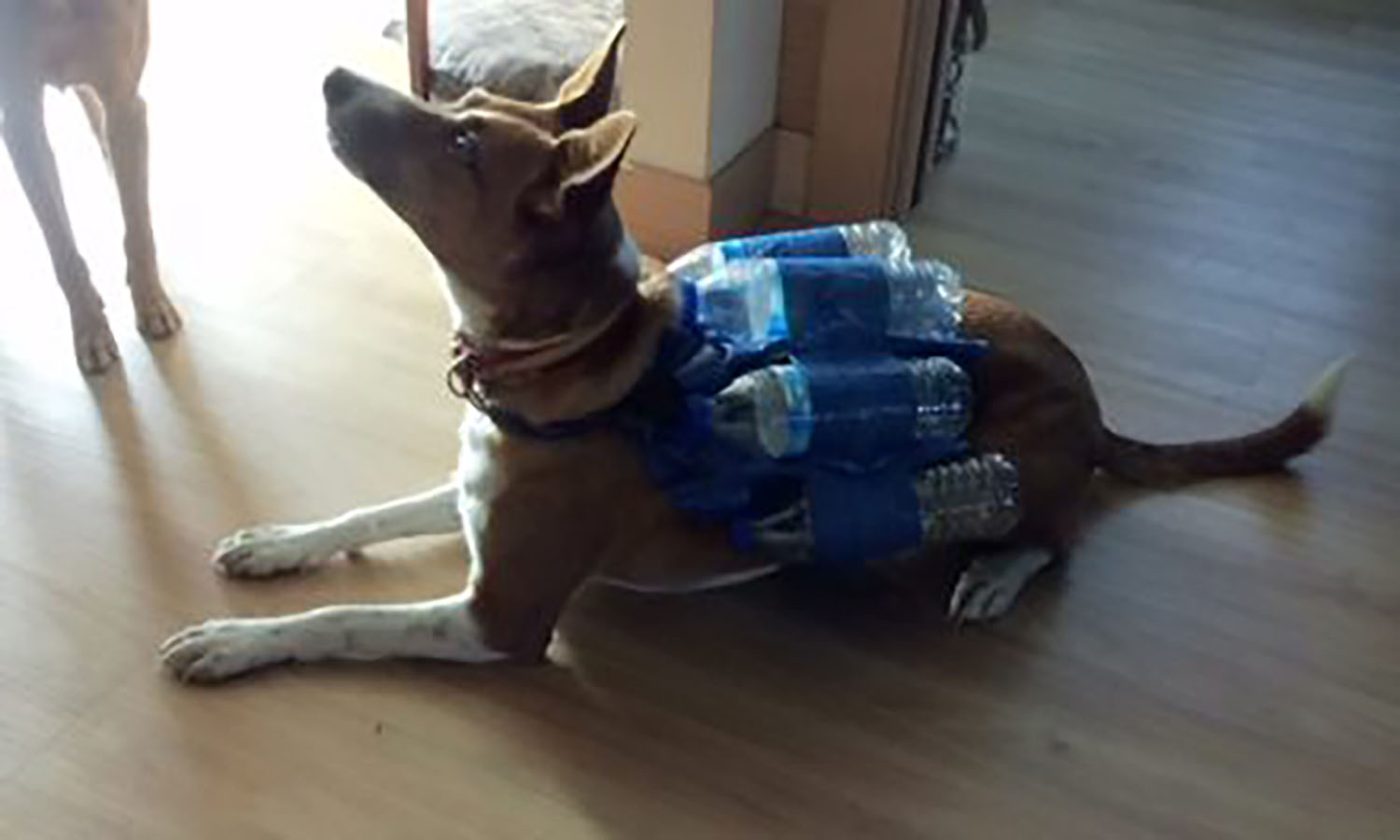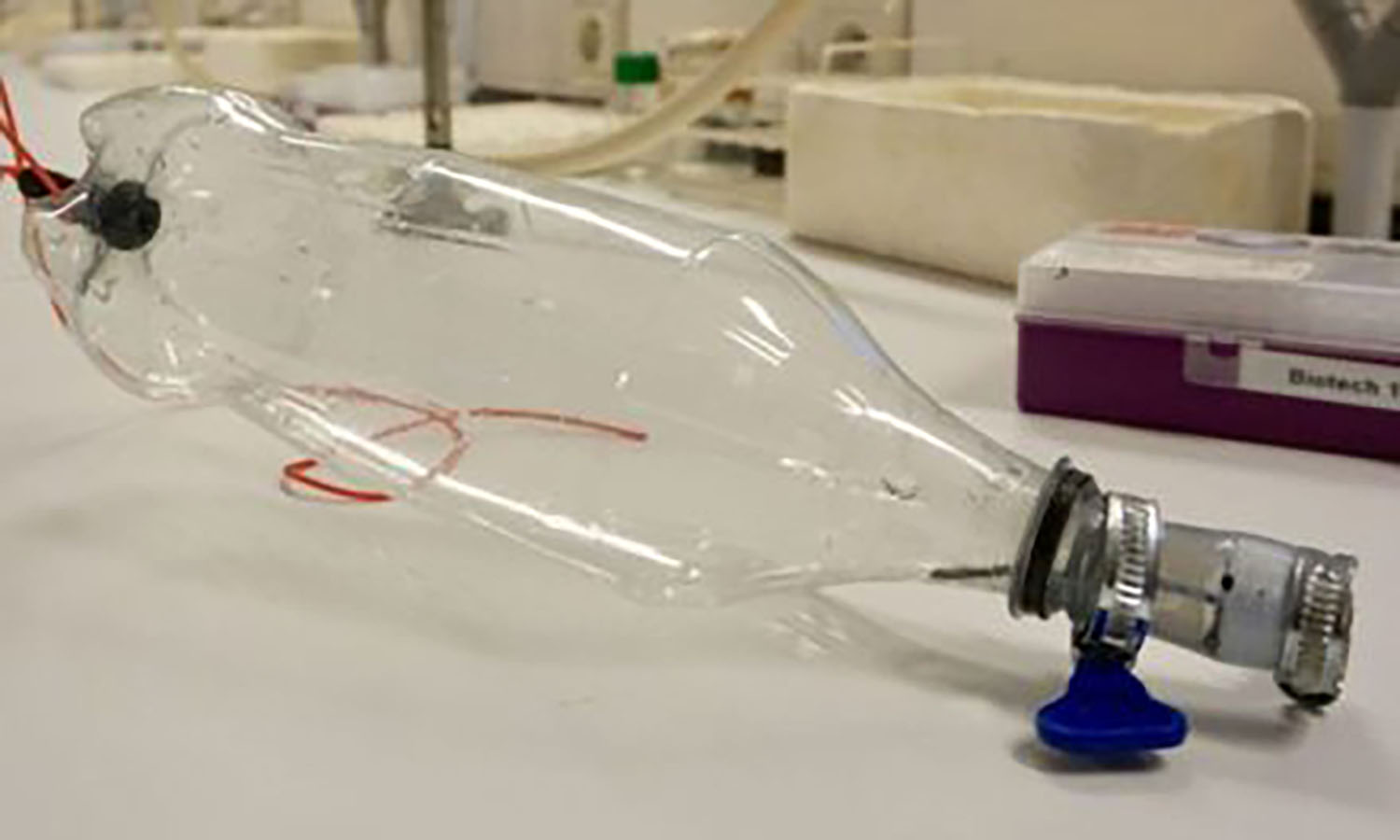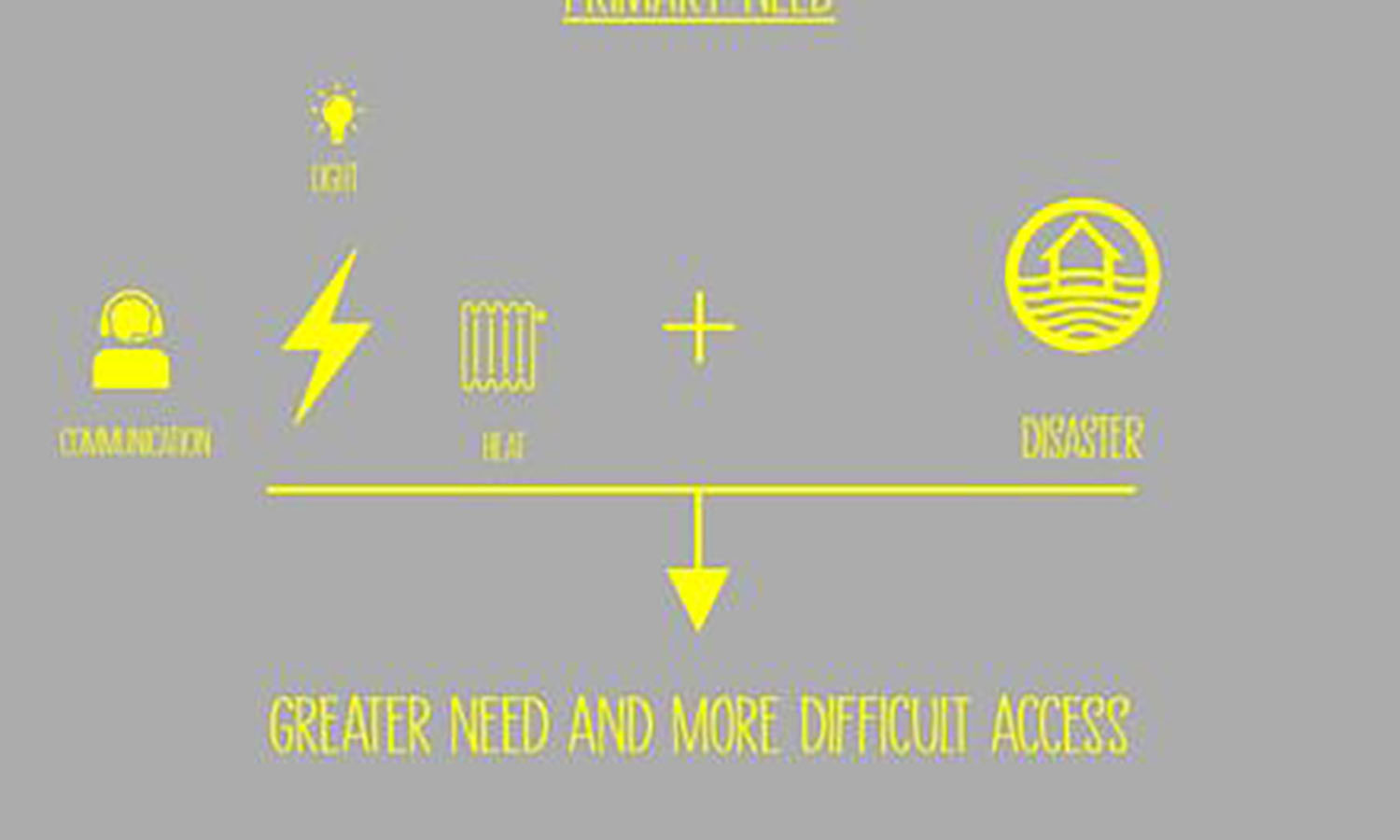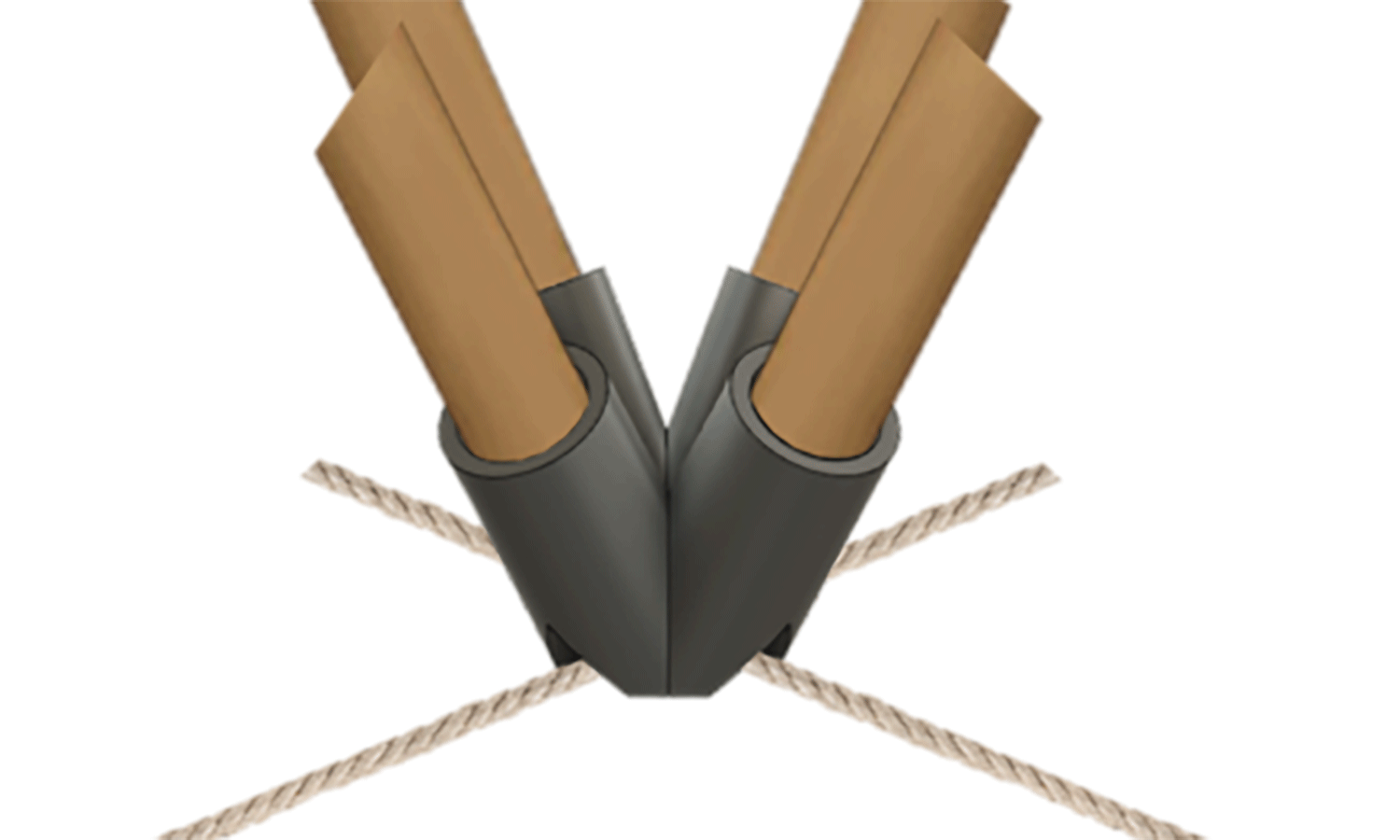A marker in the sky, installed by fishermen, to indicate an evacuation position.
Project Summary
This object would come later to the floods. The latter will be deployed on the boats of voluntary fishermen who come to support the authorities during evacuations.
During the floods, fishermen played a vital role in evacuating people. That’s why the authorities equip fishing boats: fuel, drinking water, lifebuoys and flashlight. It is at this moment that our object is distrubuted to the fishermen.
These fishermen arrive by truck to the flooded areas. Arrived on site, the boats are deployed to search for people to evacuate. By doing this fishermen get injured or damage their boats by venturing into risky areas. They are the best informed about safe areas to evacuate. These fishermen will therefore deploy our system, as a marker in the sky, in places they consider safe. Following this, fishing boats and people to evacuate, can find their way more easily during evacuation.
Regarding the production of our object, Kerala has 22 Fablabs throughout the region. The production of this object would be realized thanks to the laser machines. These will cut our sail and its structure.
Our goal is to put 2 markers per boat when distributing important items.
During the floods, 420 fishing boats were deployed. Which means that we will target a production of +/- 1000 copies. Which means 45 markers by Fablab.
Story Board
Video
References
-
Experts:
- Awais Tayeb from FAUAPS ( Awais Group)
- Sitographic Sources:
-
Articles:
- ABSOLUTE – Aerial Base Stations with Opportunistic Links for Unexpected & Temporary Events
(Contract No.318632 Deliverable FP7-ICT-2011-8-318632-ABSOLUTE/D5.7 Qualification and Certification Framework Report) - Designing and Implementing Future Aerial Communication Networks
((Sathyanarayanan Chandrasekharan, Karina Gomez, Akram Al-Hourani, Sithamparanathan Kandeepan, RMIT University, Melbourne, Australia Tinku Rasheed and Leonardo Goratti, Create-Net, Trento, Italy Laurent Reynaud, Orange, Lannion, France David Grace, University of York, United Kingdom Isabelle Bucaille, Thales Communications & Security, Paris, France Thomas Wirth, Heinrich Hertz Institute, Berlin, Germany Sandy Allsopp, Allsopp Helikites Ltd, Damerham, England ) - Aerostats All Australia AAA Mobile Coverage (Aerostats All Australia AAA Mobile Coverage – Final Public Release )
- HELIKITES FOR HIGH-ALTITUDE RADIO-RELAY WHITE PAPER 16th Dec 2010
(Company: Allsopp Helikites Ltd, Damerham, Fordingbridge, Hampshire, SP6 3HW, England. )
- ABSOLUTE – Aerial Base Stations with Opportunistic Links for Unexpected & Temporary Events
- Haugimont
During our week of experimentation at Haugimont, we developed the main idea of our project. During a flood, panic and disorganization prevail… Which prevents the effectiveness of the evacuation.
We wanted to imagine a bright object to indicate safe places for the victims to regroup in order to improve the effectiveness of the evacuation. During a flood one of the problems is the lack of electricity.
We embarked on the development of several light reflector using candles and aluminum foil. This reflector had to be fixed on the buildings or on the roof of the latter.
- Skype with Kerala
We then had an exchange with the managers of a Kerala Fablab to confront the reality of the context. A problem that they highlighted and the lack of height our « lantern », according to them it was necessary that our object is much higher than a roof of building (because among others of the vegetation).
That’s why our object must be between 30 and 40 meters high. They also brought a crucial precision to the actors of the evacuations by reminding us that the first actors are the fishermen.
- Fishermen
We dwelt on the role of fishermen in the evacuation. By learning more about their role, we highlighted two stages in the evacuation process:
Step 1 : The fishermen leave their village by the roads with their boat. They load their boat on trucks until the city stricken

Step 2: They unload their boat and borrow as many paths as possible to reach houses to evacuate the inhabitants. Most of the time they damage their boat or they hurt themselves

- Work on the tag
So we imagined a scenario in which fishermen would have a leading role in setting up the object. Indeed it is question at this stage to deploy a balloon filled with helium (or hydrogen).
We know that trucks carry fishing boats to the disaster areas. At this point, the kits would be distributed to the fishermen, then they would go on the streets to rescue the survivors. Fishermen would be responsible for deploying these beacons in safe places to indicate to the people in this perimeter the place to reach to be rescued quickly. But this balloon would also indicate to other fishermen where to go easily to avoid engaging in maneuvers that could damage their boat or hurt them. Evacuation would be simplified and more efficient.
- Weather conditions in Kerala
During the Kerala floods the meteorological services recorded winds of up to 50 kilometers per hour, a force 7 on the Beaufort scale.
We therefore know that our balloon must be able to withstand these gusts of wind.
- Meeting with Awais Tayeb
During our research we became aware that a young Brussels had thought of a similar project but only to serve the defense. The FAUAPS is an aerostat-type balloon of 5 meters in diameter, rising to 300 meters of altitude that can be seen up to 12 kilometers. This project will be used to communicate the medical centers or evacuation center. Awais Tayeb has allowed us to focus our research on aerostats and understand how they work.
- Helikites
Our research led us to the Helikite. The principle of the Helikite is the following: Associate a kite with the Helium balloon to stabilize it during a violent wind.

Indeed, a simple Helium balloon of 0.16 cubic meters has a tensile capacity of 0.06kg without any wind. By adding this sail and with different climatic conditions (15mph of wind), the traction capacity of this triple balloon is equal to 0.180kg.
Given that in Kerala the winds can reach 31mph so we found it wise to dwell on this system of markers in the sky.
- First Prototypes
Our first prototypes were to make a helikite. The problem is that we realize some mimicry. We made prototypes based on our mistakes. Our mistake was to get into this production without really understanding the system of a Helikite. That’s why we arrived at this last protype. It did not meet our expectations. Indeed because of the lack of knowledge we forgot to take into account the fact that the sail must imperatively be stretched.
During big bursts of wind this prototypes could not stabilize anymore.
- Suite
The next part of our project is to create a Helikite. By realizing this we will be able to see the different parts to improve or to adapt according to our project. It is important to focus on something that has already been done and understand how this Helikite works.












